|
Words & photos © Tim Keller
November 16, 2019 Bywater
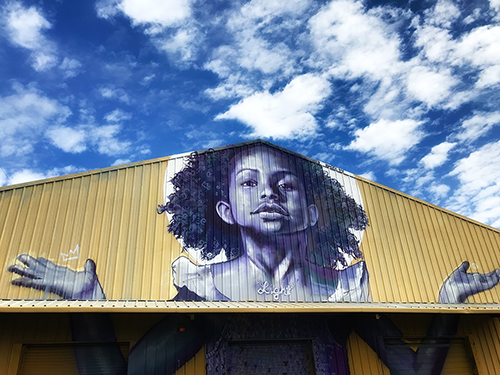
Since last week's post, we've booked a return trip to New Orleans for the spring. I guess we're all in. We'd intended to return to Guatemala in the spring but decided to move that to the following spring: We just weren't done exploring and enjoying New Orleans and Acadiana--the towns, roads, waterways and bayous of southwestern Louisiana. We've booked nine nights in the same Airbnb, one block from the Mississippi River in the heart of a neighborhood we fell in love with, Bywater. Unlike the bustling French Quarter and Frenchmen Street (see brass band busking in photo at bottom right), we were able to park our rental car on the quiet street right outside our quiet house, and we could walk to Bywater Bakery and wonderful cafes and restaurants within a two-block radius, all within an artsy (see mural at Studio Be above) residential neighborhood. The heart of the French Quarter was a mile and a half walk, perfect for us--we like to walk.
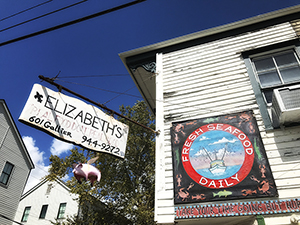
Elizabeth's fronts a new park along the river one block from our Airbnb. We had a huge breakfast there one morning, and I returned another day for a lunch of gumbo and grits (below left; all the photos here are iPhone walking-around photos). Other favorites were Pizza Delicious and The Country Club, both two blocks the other way. Honestly, though, once we'd tried them all, we ended up getting brunch at Bywater Bakery almost every day. It feels like home. We even stopped there to pick up airport and airplane food on the morning we left to fly home to New Mexico.
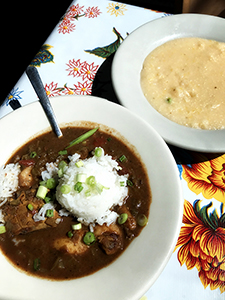 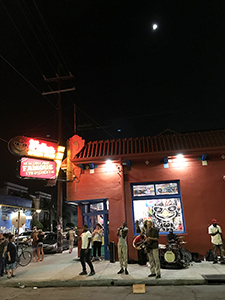
New Orleans, as Louisiana in general, is famed for its food, which is always part where we choose to travel. (Another factor we've noticed is proximity to the ocean, for fresh seafood--Santa Monica, the Northern California/Oregon coast, Hawaii, Guatemala, and now Louisiana.) We used our rental car to explore Acadiana, stopping on our way back to Bywater one dark night to experience the legendary Mosca's Restaurant. (I've posted some road trip photos and commentary here at my photography blog.) Some of the other nights we walked to Frenchmen Street and the French Quarter to begin sampling the restaurant riches there. There's so much, and so little time, that we're already looking forward to returning in the spring. Stay tuned.

comment
November 8, 2019 Rebellion
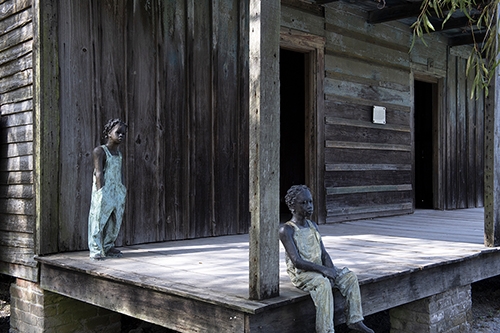
When we arrived in New Orleans, Christina wanted to go see a plantation, having just finished the copy of The Underground Railroad that I'd passed on to her. Colson Whitehead's 2016 novel had won the National Book Award, then the Pulitzer Prize, drawing my attention. Our Airbnb host recommended we choose the Whitney Plantation from among the many open to the public along both sides of the Mississippi River upstream from New Orleans.
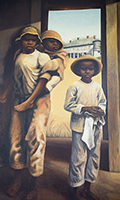 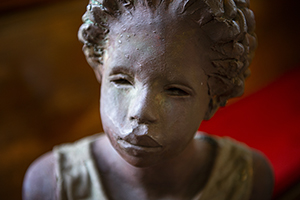
Great choice, a game changer. As it prepares to celebrate its fifth anniversary, Whitney Plantation is the only plantation museum in the region with an exclusive focus on slavery and its long history throughout the area, offering an impressive museum along with an extensive plantation tour that runs ninety minutes and often more. Here and on my photography blog, I'm sharing some of my photos from the Whitney, including three above of art including sculpture.
 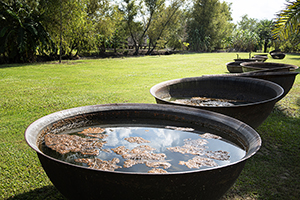
Sugar cane was the primary product in the area and slaves spent long days cutting and processing it, using the pots above, out in the wilting humid heat. Slaves constituted most owners' greatest financial investment and asset. After the African Slave Trade was outlawed by Congress in 1808, the only way slave owners could increase their workforce and wealth was through breeding and trading: Slave women produced children as often as possible, often impregnated by the slaveowners themselves, and the children were often sold off. Our tour guide shared the story of a woman who had to work right up until she gave birth in the cane row, then had to continue working as someone else took the newborn infant away, never to be seen again by the mother, sold off for the owner's profit.
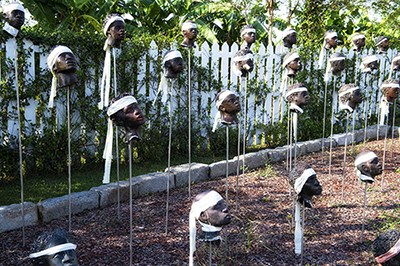
Although I have a bachelor's degree in American History with an emphasis in social and cultural history of the American South, I had never heard of the 1811 German Coast slave revolt (named for the the number of German settlers in the area) in which 500 or so slaves from the Whitney and surrounding plantations mutinied, rebelling against their owners and proceeding on to New Orleans. The uprising lasted only two days and the offenders were captured, tortured, and executed, their heads cut off for display to dissuade others. The Whitney Plantation now has a sculpture garden simulating those heads.
We learned of a planned historical re-enactment several years in the making and, as coincidence would have it, that re-enactment is underway as I type this, today and tomorrow. Yesterday the New York Times published this fabulous feature on the re-enactment with lots of great photos --recommended! (P.S. Nov 9 - Here is today's big NYT feature with photos of the event.) Participants are re-enacting the many documented acts of the rebellion, then marching on to Congo Square, I believe. I look forward to seeing the follow-up features. We were fascinated to dig into this history that was not just (almost) forgotten, but purposely buried.

comment
October 25, 2019 Congo Square
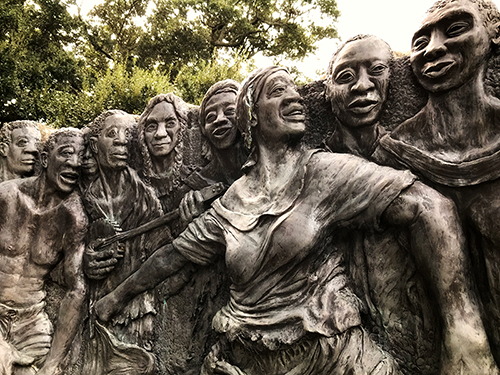
The United States just marked the 400-year anniversary of the arrival of the first captive African slaves in what would become its territory. Two hundred years later, in 1808, Congress outlawed the African Slave Trade, though slavery itself (and breeding and trading slaves) wouldn't be outlawed for another half century, with the Civil War. New Orleans became the center of the brisk domestic slave trade.
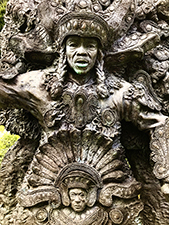 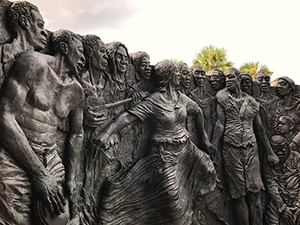
In Louisiana, slaves were commonly given Sundays off from work. Around New Orleans, they took to gathering on Sundays in large numbers, hundreds, to visit, eat, make music and dance. The city moved them to what was then the outskirts, to what became Congo Square, just across Ramparts Street from the French Quarter, at the edge of the Tremé, America's oldest African-American neighborhood. It was here that African musical influences merged with Spanish, French, German and others--the mouth of the Mississippi River drew a rich multicultural mix--producing the seeds of American music, including jazz, blues and even country.
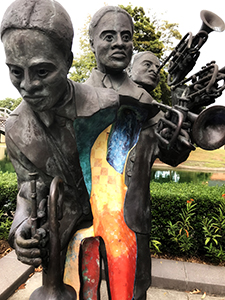 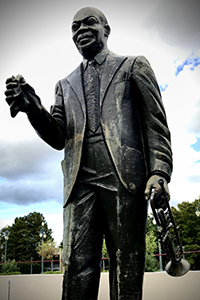
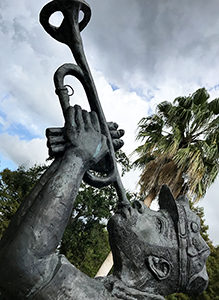 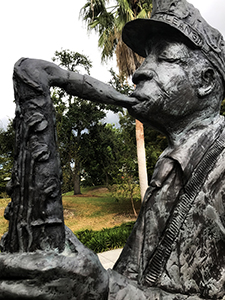
Today, Congo Square is part of Louis Armstrong Park, a highlight of our weeklong visit this month to New Orleans. Dinner at the legendary Dooky Chase's Restaurant nearby in Tremé was another highlight. If I can get you to do one thing, short of actually visiting this area, it would be to watch the three-season HBO TV series Treme, an ensemble tale by the same team that made The Wire. Great cast, great characters, great stories, great music. (I just discovered that HBO has both series available for free streaming, just click the link above.) On our second time through the Treme TV series (we have the DVD box sets), we decided we needed to go down there. We weren't disappointed.
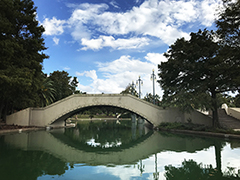 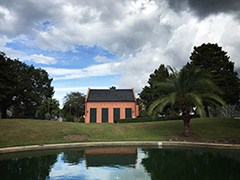
If you visit NOLA (New Orleans, Louisiana), take your camera! (And plan to gain five pounds, as we each did: the food is amazing.) In Armstrong Park, I photographed sculptures depicting the rich history of slavery, the Mardi Gras Indians (including Big Chief Tootie Montana, top left), and the birth of American music. The bridge and the fire house (and that sky) are among the other photographic attractions. Recommended!

comment
September 29, 2019 My 46 Cents
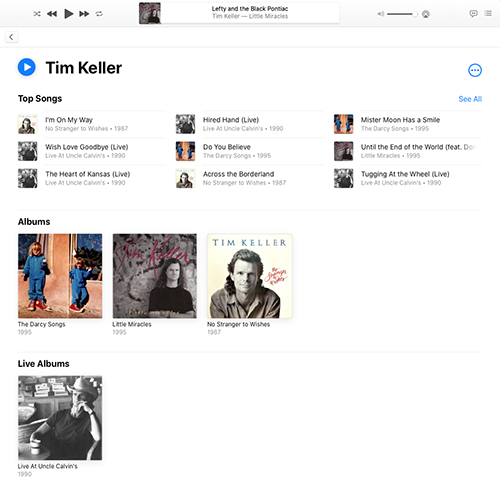
Updating my Apple software to the new Catalina operating system was transformative, but not in entirely positive ways, at least for me. Many of my key photography and web-building softwares were affected. Some tools I rely on are lost, including easy ways to center images here on the website or place them to the left or right of text. I'm having to jury-rig, copy/pasting from old images to get the old formatting. Workarounds.
iTunes transformed into Apple Music and no longer allows 90-second previews of songs I might want to download; instead, they urge that I join their subscription streaming service, also called Apple Music, so I can not only preview any songs I want but actually listen to the whole song, anytime. Because my wife already subscribed at $10/month, she's now added me for another $5/month so we have a $15/month family plan. So far I have to admit that I'm kinda liking it--two steps forward, one step back--but it begs the question of how artists are being paid.
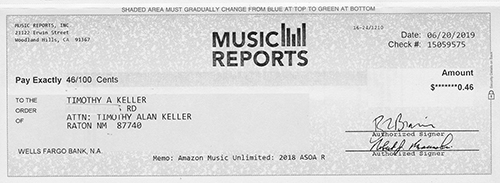
My music is available on all the streaming services--Spotify, Pandora, Amazon, Apple (above) and the rest. When people bought downloads of my music, I got a fraction of a penny for each purchase. For example, see my last royalty check from Amazon, 46 cents. But now no one buys downloads--at least I can no longer buy them from Apple--so where is my next 46 cents going to come from? That $10 you pay for streaming each month? Once they pay Taylor Swift and Kanye West from that income, there's nothing left in the pot for me or the others like me.
The streaming rate is lower than the download rate--so presumably something less than 46 cents. My publisher is collecting streaming income for me but only cuts a check whenever it reaches $100. Last time I checked my account online, I was up to about $80 after about four years, so about $20 a year. So much for supporting the arts.
Back when I was making this music, I hoped for royalties in my retirement. Not. Luckily, and unanticipated back then, my photography has instead become a steady supplemental retirement income as I regularly license my images to companies, websites, magazines, publishers, and individuals. The glass is at least half full.

comment
Tim's Blogs - Archive |